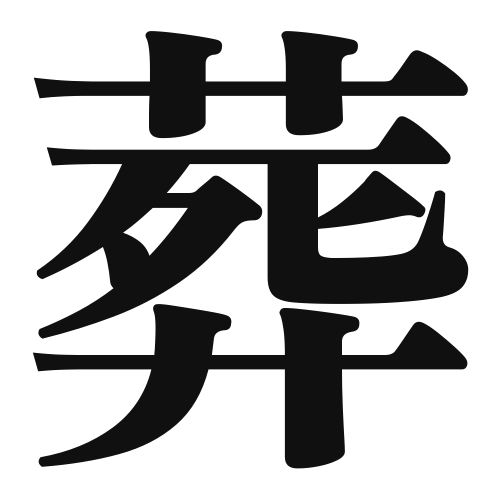1. Overview of Meaning
The kanji “葬” (sou) means “to bury” or “funeral.” It is associated with the act of laying someone to rest after they have passed away.
2. Formation and Radical
Formation of the Kanji: The kanji “葬” is a combination of two components: the radical “艹” (grass) at the top, which often relates to plants or nature, and the character “喪” (mourning) at the bottom. This combination reflects the idea of burying something natural, such as a body, in the earth.
Radical: The radical for “葬” is “艹,” which indicates its connection to nature and plants.
3. Examples of Usage
Common Words and Phrases:
- 葬式 (そうしき, soushiki) – funeral
- 葬儀 (そうぎ, sougi) – burial ceremony
Example Sentences in Daily Conversation:
- 彼の葬式は来週行われます。 (かれのそうしきはらいしゅうおこなわれます。) – His funeral will be held next week.
- 葬儀に参加することは大切です。 (そうぎにさんかすることはたいせつです。) – It is important to attend the funeral.
4. Synonyms and Antonyms
Similar Kanji:
- 喪 (も, mo) – mourning; this kanji focuses more on the state of grief rather than the act of burial.
Antonyms:
- 生 (せい, sei) – life; this kanji represents the opposite concept of death and burial.
5. Cultural and Historical Background
Connection to Japanese Culture: In Japan, funerals are significant cultural events that involve various rituals and customs. The kanji “葬” is deeply tied to these practices, reflecting the respect and solemnity associated with death.
Proverbs and Idioms: One common saying is “葬る” (かくす, kakusu), which means “to bury” in a metaphorical sense, often used to describe hiding or suppressing something.
